| << |20 | 21 |
1 | 2 | 3 | 4 | 5
Sicily, Adventure #22, Page 3
Pictures and Stories About Bicycle Adventures
Sicilia, Italia,
By Bicicletta (Bicycle), Ottobre, 2007
Sicily Day 6, Bike Day 4: Marsala to Selinunte
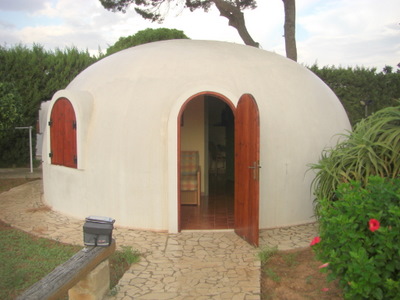
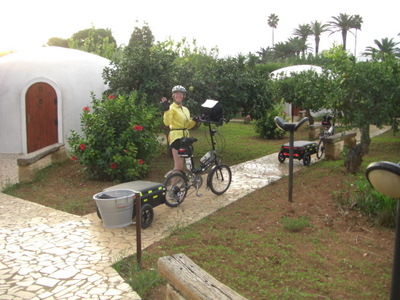
We had several new experiences at this location:
- The water was non-potable.
- Its the first time that we had to buy water, ever. I think there is something in every American that chokes at having to buy water. We're biking, so we needed eight or nine liters of water. It's not cheap, and we had to buy it in little bottles from the hotel - there was just something not right about how this issue was handled.
- We experienced our first ever technical ignorance. We could not figure out our room's air conditioner control. We have operated remote control air conditioners before. In any case, we could not operate this remote control air conditioner device. In all fairness, a predecessor person messed up the controls at the BIOs level, but neither of us knew that there was a hidden slider on the remote that allowed one hidden access to establish temperature and fan settings.
- We humorously learned that Italians understand the word 'Kaput'.
Above Right: Packed up and ready to go.
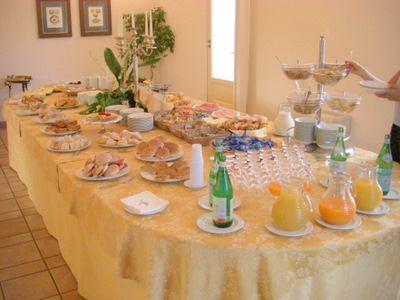
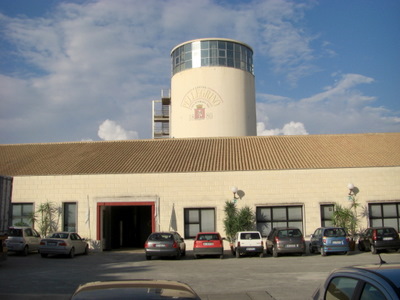
Above Right: We take time to see the Marsala Wine distillery of the Pellegrino Wine Maker. It's 0900 and they want us to wait for a tour at 1100. No one seems to understand or care about our bike touring situation. We can't hang around for two hours. Finally, the Marketing Manager allows us to walk around the facility and gives us some samples at the end of our walk about. Luckily, Dennis is familiar with the Solaris Process and explains it to Terry. We ended up having a good time.
The Lecture:
All 'fortified' wines have alcohol added. The best fortification alcohol comes from the same grape that it is being added. All of the following Wines are created by fortification in similar processes. A major variable is centered about when the alcohol is added to the fermentation process. If the alcohol is added early, the wine is sweeter. If the alcohol is added late, the wine is dryer. The following is a list of popular fortified wines:By the way, the Fortification Alcohol itself (assuming that it is made from grapes) is called Brandy (which is derived from the Dutch word meaning 'Burnt Wine', as in Branded, which is a reference to the distillation process). Other names for Brandy are Armagnac, Cognac, Grappa, Marc, or Bagaceira, depending on the country and their is usually an associated set of laws for each country.
- Port (Portugal)
- Sherry (Spanish)
- Madeira (Portugal Island)
- Vermouth (Italy, supplemented with many herbs)
- Montilla (Spanish, technically Montilla-Moriles)
- Marsala (Sicily)
- Liqueur Muscat (Australia, Liqueurs are humorously classified as 'Stickies')
- Liqueur Tokay (Australia)
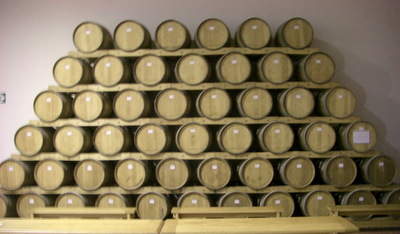
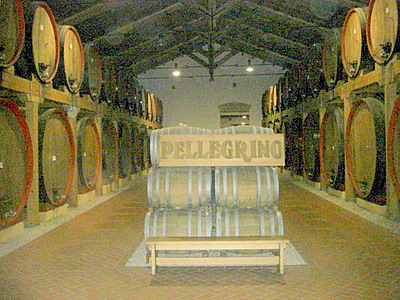
Wines in different states of aging.
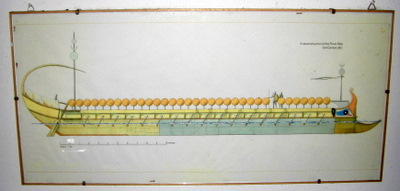
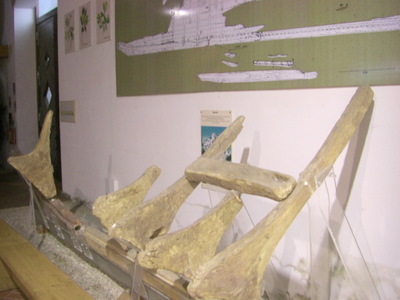
Drawing and actual parts of a 3 BCE Punic (Carthaginian) War Ship
with Phoenician Builder/Language Markings.
Displayed at the Pellegrino Winery.
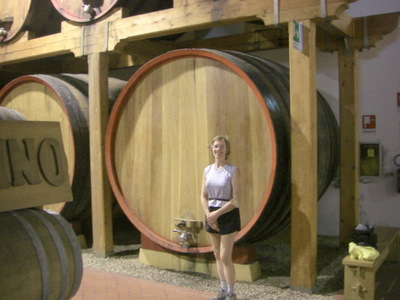
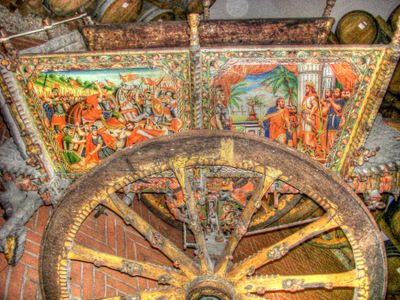
Above Right: Old Wine Cart. Notice the figure carvings, especially on the wheel spokes. It seems that the art work, on most of the fancy wine carts that we have seen in Sicily, show an Arabic/Islamic versus Christian battle scene as well as some Christian religious scene.
Believe it or Not, Alcohol and the process for making alcohol was introduced to Europe from the Muslim world. The Muslim's used it purely for medicinal purposes.
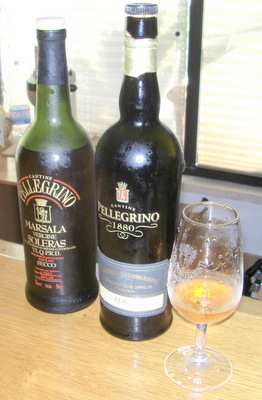
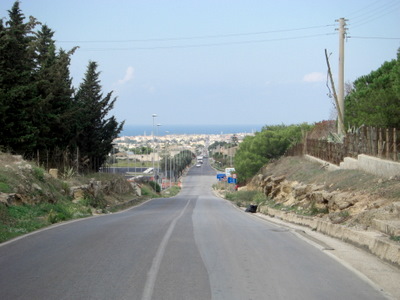
Above Right: A look, backwards, as we depart Marsala. What a nice day.
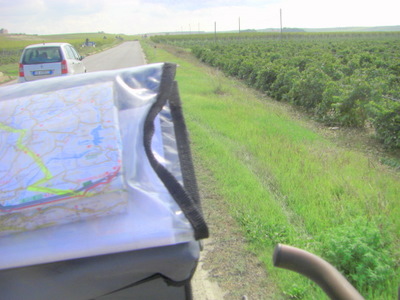
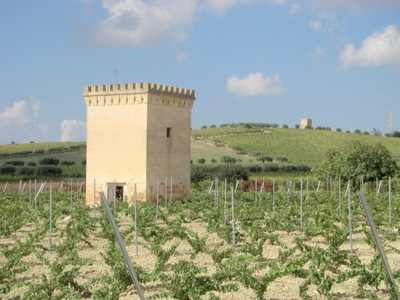
Above Right: We have never been to Spain, but this reminds us of Spain. I can't explain. These little Rook watch towers would be commonly seen all day long today. We are biking along the south side of Sicily today.
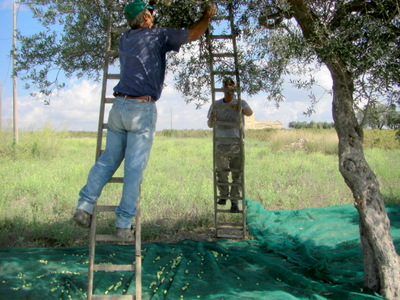
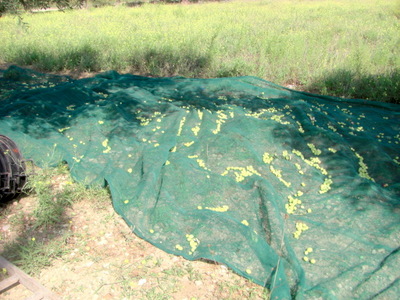
Above Right: Olive Net on the ground. Terry and I, later, picked a couple of olives off of a wild olive tree that was overhanging the road. The olives tasted quite bitter. Later we would learn that the olive is naturally bitter and that there are two olive curing processes. One process is for your own table grapes and the other process is for commercial packing. Basically, both processes involve soaking in a Salt Brine Solution.
Supposedly, Sicilian Olives are the best in the world (based on their slightly higher acid content). Because of Price and Demand, it is very difficult to get Sicilian olives or olive oil outside of Sicily.
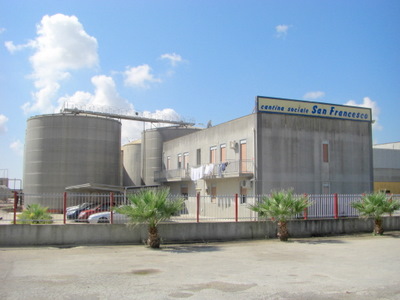
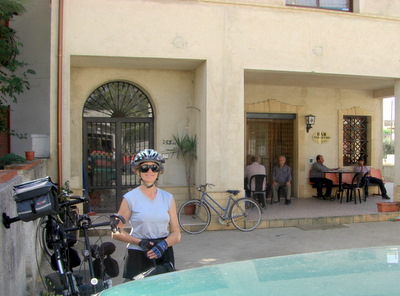
Above Right: We have stopped for lunch at a bar in or near Borgata Coshera. We buy Bread and Cheese. Our bikes get a little attention.
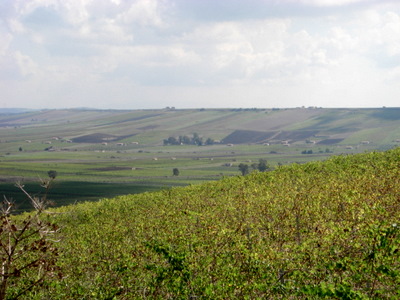
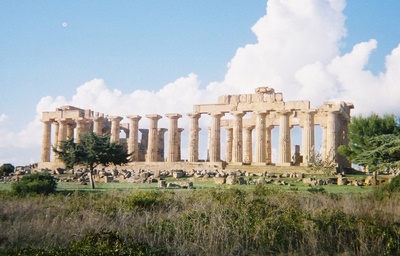
Observations (Sans Camera):Above Right: Selinunte. We bought a disposable Kodak 35mm Camera. This and following Greek Acropolis and Greek Ruin pictures are from the this disposable camera. By the Way: Thank You Kodak!
- We passed through countryside that had above ground irrigation piping. Some of the irrigation was open water aqueduct of newer construction (metal and plastic).
- We also observed that a lot of the stonewall fencing around many fields had small amounts of ancient blocks in them along with the normal stones.
- About every kilometer of travel, we would see an ancient structure of some kind, in varying sites of repair, probably house or farm structures but difficult to determine. Many had been converted to Jesus or Mary Shrines.
We had previously passed through a big town called Campobello, maybe a population of 3,000 to 4,000, and there was not one single shop that sold cameras, period. There was a photo development center. At the photo development center we were told that Castelvetrano, 10 K to the northeast, did have a camera shop that sold new cameras. 'Going to Castelvetrano' became the backup plan, but since we were going to Selinunte anyway and it is one of the most photographed places of Sicily, we thought that it would be worth checking there, first, for new cameras.
Nothing. Not one shop in Selinunte sold new digital cameras. So, since it was near closing time, we bought a disposable camera, knowing that we would be changing our route plans so as to go to Castelvetrano tomorrow.
Later, at our hotel in Selinunte, we tried to solicit the help of our hotel check-in people, but the staff was highly disorganized at the front desk, they were having check-in issues with patrons and there was a massive pall of low-budget and low class decision making at this hotel. Absolutely zero help. This hotel was in such a disarray, that they controlled our air-conditioner from the front desk. We had to ask for the A/C to be turned on and later that night, someone incorrectly decided at 0300 in the morning that we did not need air conditioning anymore. Wrong.
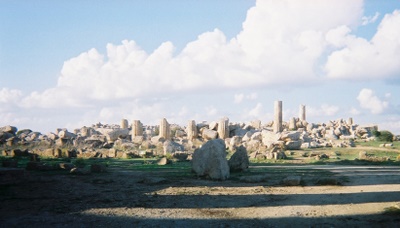
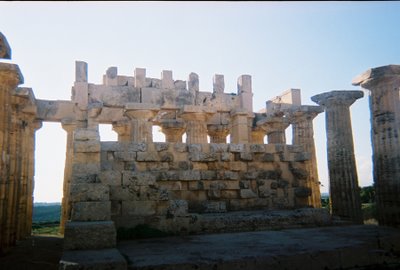
Above Right: The Temple area inside the Acropolis of Selinunte. The Greek word akro means top or high (as in acrophobia) and polis means both city and of/for the people (like policy and police).
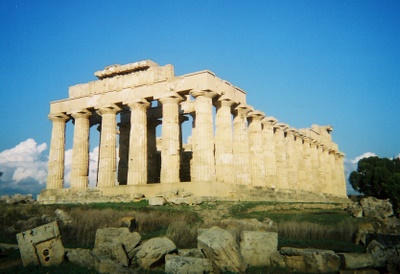
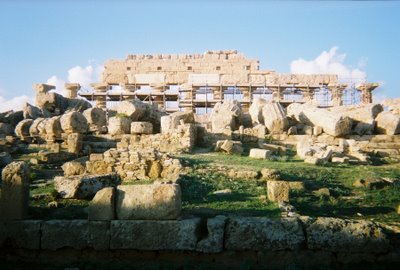
The word "Selinunte" came from the proper name of the wild celery called "selinon." This celery still grows in Selinunte today. Selinunte was a successful Greek city that at one time had a peak population of 25,000. The location was discovered by Greek colonists around the time between 650 B.C. and 630 B.C. These colonists were from Megara Hyblea, located in Sicily's east coast.Above Right: These are the remains of the Shrine of Demeter Maloporus. It is located across a small valley from the main Acropolis.
Sicily Day 7, Bike Day 5: Selinunte to Contessa-Entellina
By way of Unscheduled Visit to Castelvetrano
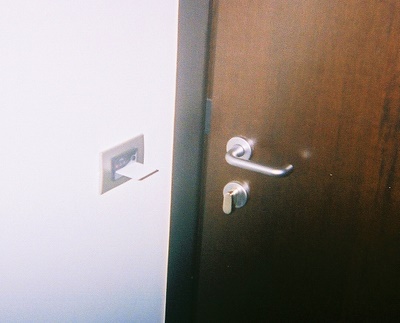
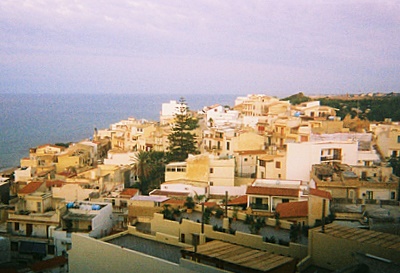
Above Right: Our room does have a good view. Picture taken with the disposable camera.
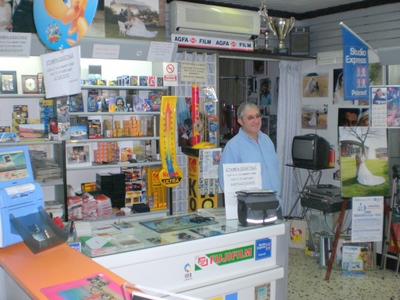
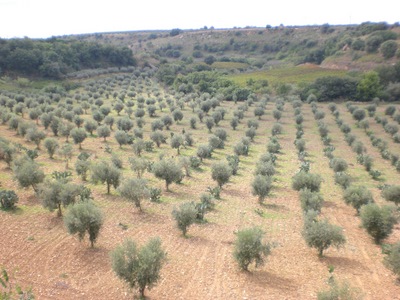
We were buying the same brand of camera (Casio), but the battery was different than the previous camera. We were lucky enough to get a camera that matched the same memory card and one whose basic operating functions we already understood. Terry and I feel very strongly about traveling and keeping memories, especially for bike journaling, so neither of us wanted to depart immediately with an uncharged battery. We just were not traveling without a working camera. It took two hours to charge the battery. The owner was kind enough to set up the charger, but we all had to wait, so we explored the local area.
The camera shop was only a half a block from the main plaza. We noticed all the high school kids milling about during, what is now, lunch time. We were surprised by how many kids had scooters. We also noticed that 10% of the scooter drivers were young girls. Probably 80% of the kids carried another kid passenger and it was half and half passenger sexes. Another surprise was what the kids were eating. There was a traditional bakery/pizzeria across the street from our camera shop. The kids were mainly eating French Fries but it did NOT appear that they were using any additional sauce like Catsup, Mayo, or Vinegar (such as we have seen in other countries).
Above Right: This is an olive orchard. Even in person this scene looked like something from a model railroad. We're about one hour east of Castelvetrano.
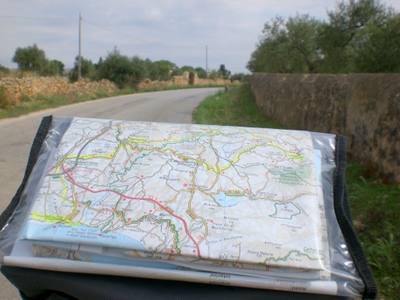
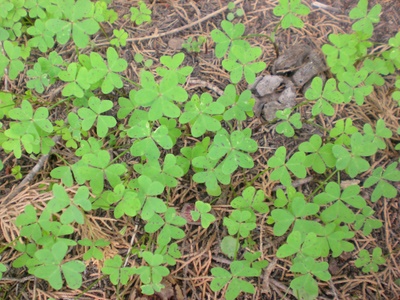
Above Right: This is Sicilian Clover. It has a deeper cut than American or Irish clover, they're almost heart shaped. The thing that may look like dog poop is actually a decomposing pine cone.
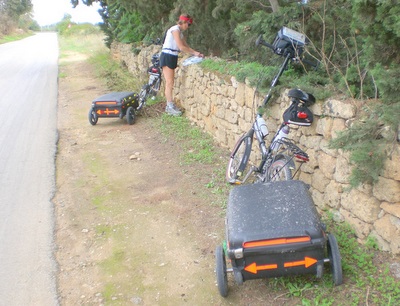
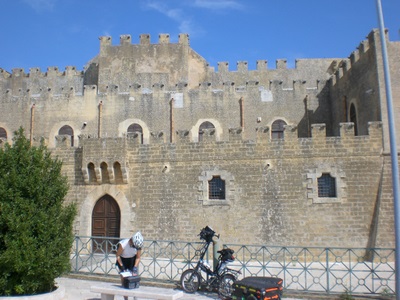
Above Right: A Castle at the top of the hill (of course) in the town of Partanna. It commands a view of the ocean to the south even though we are 15 to 20 K inland. We can't take any quality pictures of the ocean view because it is hazy and we are looking directly into the sun. The Castle [Castel] is not open to the public.
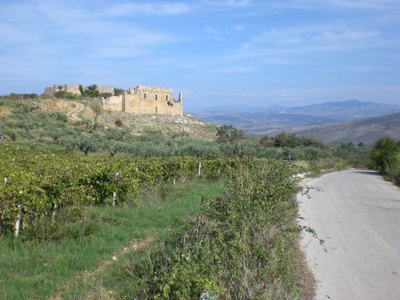
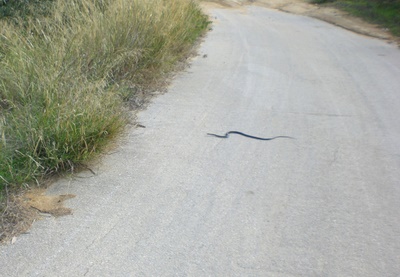
Above Right: It is what you think it is. What's amazing is that Dennis saw the snake in the dirt off the right side of the road and had the reflexes, for the moment, to get the camera out and catch a picture of the snake before it disappeared into the grass.
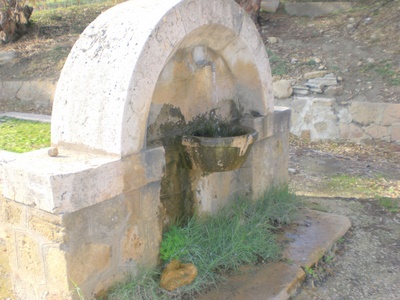
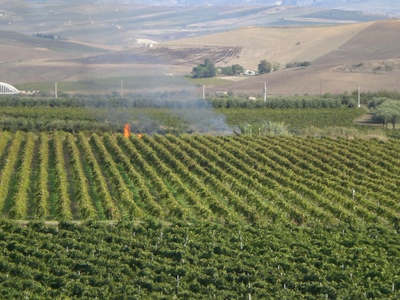
Above Right: The grapes have been harvested. Now the field hands are trimming unwanted stems and collecting dead pieces for the fires.
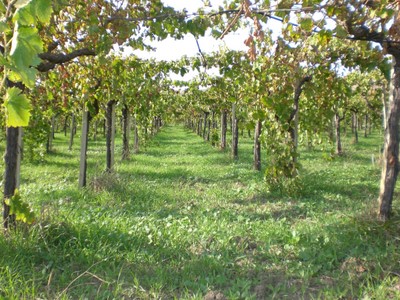
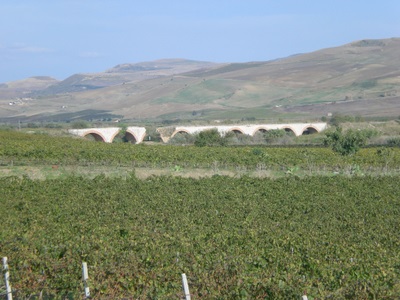
Above Right: A war reminder.
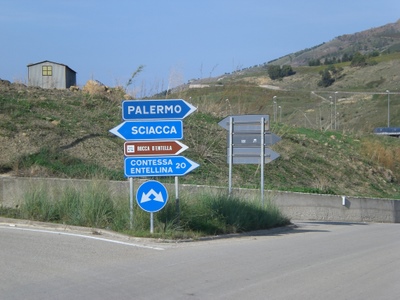
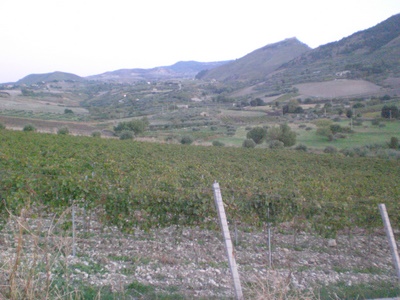
Above Right: We're going to the farthest ridge line. We'll be staying at the home of a girl from Russia and a guy from Venice (Venecia). He used to be an "on location" cook for Hollywood film companies. He put away some money and has had quite an adventurous life himself, to include time in remote Pacific Islands.